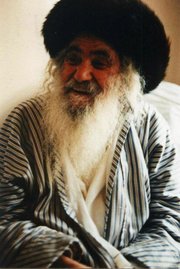Osowiec - Part I
On February 3, 1915, German forces initiated a second attempt to storm the fortress. A difficult, prolonged battle ensued for the first line of the Russian advanced field positions. Russian forces under these difficult conditions held their opponents in shallow trenches for 5 days. Under the pressure of the superior forces of the enemy, by the decision of the command of the garrison, on the night of February 9, the fortress infantry was moved back to the second line of field reinforcements which were better prepared.
For the duration of the next two days, despite more intensified attacks, the Russian troops held their defense. However, the retreat of the Russians from the first lines of defense allowed the German artillery by February 13 to once again begin shelling the forts with heave siege weaponry of 100-420mm caliber. Firing was done with volleys of 360 shells, with a volley every four minutes. After a week of shelling the fortress, 200-250 thousand heavy shells were expended.
Furthermore, especially for the shelling of the fortress, the Germans set up four 305mm siege "Skoda" mortars . German airplanes bombed the fortress from above.
The European press wrote in those days - "Terrifying was the appearance of the fortress. The whole fortress was enveloped in smoke, through which, in one place or the other, enormous tongues of fire from the shell explosions would escape. Columns of dirt, water and whole trees flew into the air. The earth shook and it seemed that nothing could withstand such a hurricane of fire. The impression was such that no one could come out from this hurricane of fire and iron."
The General Headquarters command, believing that they were asking the impossible, asked the commander of the garrison to hold out at least 48 hours. The fortress held another half a year.
Despite the large losses as a result of the artillery shelling, which was most intnse 14-16 of February, 25th of February - 5th of March 1915, an which led to numerous fires inside the fortress, the Russian defenses held. Further more, Russian batteries destroyed a number of siege weapons, including two "Big Berthas". After this, as several large caliber mortars were damanged, the German command moved these weapons outside the reach of the defenders of the fortress.
The second line of the advance Russian positions also held out. This failure forced the command of the German army to switch this section of the front to positional actions which continued until the beginning of July.
[My translation of the Russian wikipedia article]


2 Comments:
Translated and paraphrased from German: 'What happened then, as described in the allied press, became legendarily known as the "battle of the dead men".
The German assault crashed into a force of men in blood-soaked uniforms, who, psychologically affected by the preceding gas attack, fought without fear of death with their hand guns, two machine guns, and the last five artillery pieces. Their uniforms were blood-drenched, as their destroyed breathing passages caused them to cough up blood.
The German assault faltered in the face of this extraordinary resistance. Several soldiers panicked and fled, and their assault broke.
But in the end there were only 60 to 70 men remaining who could defend the fortress from German attack.
Yes, more on that coming!
Post a Comment
<< Home